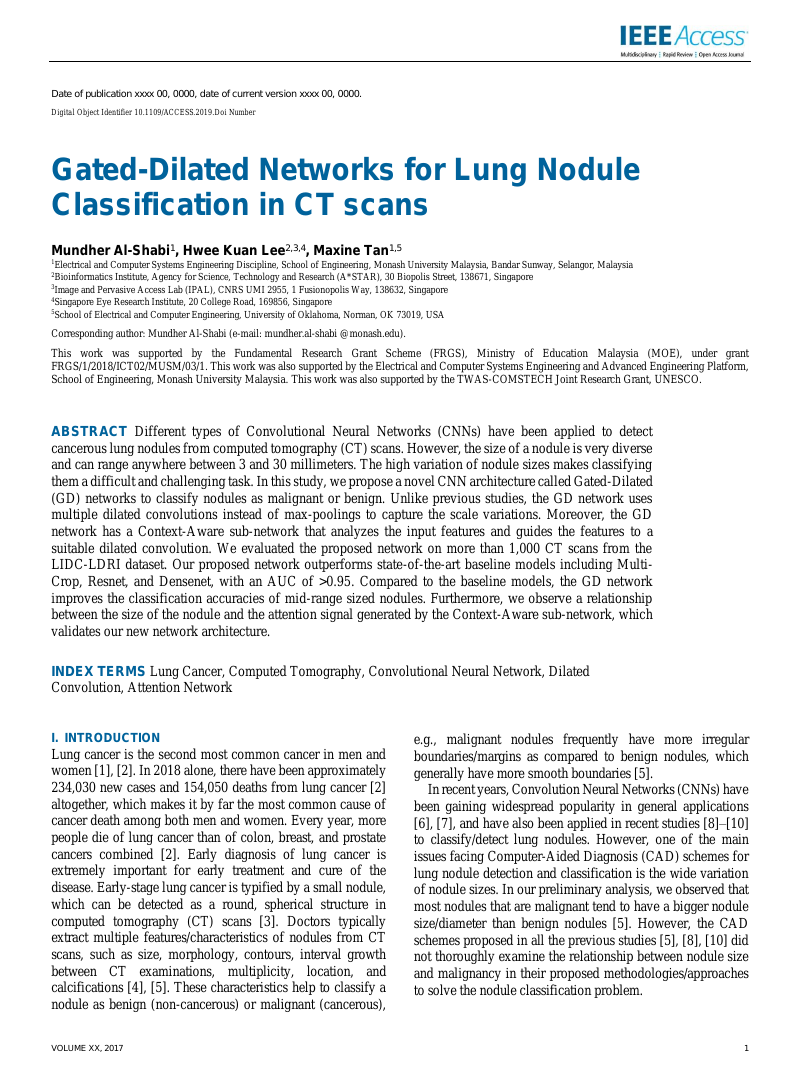Command Palette
Search for a command to run...
Mundher Al-Shabi; Hwee Kuan Lee; Maxine Tan

Abstract
Different types of Convolutional Neural Networks (CNNs) have been applied to detect cancerous lung nodules from computed tomography (CT) scans. However, the size of a nodule is very diverse and can range anywhere between 3 and 30 millimeters. The high variation of nodule sizes makes classifying them a difficult and challenging task. In this study, we propose a novel CNN architecture called Gated-Dilated (GD) networks to classify nodules as malignant or benign. Unlike previous studies, the GD network uses multiple dilated convolutions instead of max-poolings to capture the scale variations. Moreover, the GD network has a Context-Aware sub-network that analyzes the input features and guides the features to a suitable dilated convolution. We evaluated the proposed network on more than 1,000 CT scans from the LIDC-LDRI dataset. Our proposed network outperforms state-of-the-art baseline models including Multi-Crop, Resnet, and Densenet, with an AUC of >0.95. Compared to the baseline models, the GD network improves the classification accuracies of mid-range sized nodules. Furthermore, we observe a relationship between the size of the nodule and the attention signal generated by the Context-Aware sub-network, which validates our new network architecture.
Benchmarks
| Benchmark | Methodology | Metrics |
|---|---|---|
| lung-nodule-classification-on-lidc-idri | Gated-Dilated | AUC: 95.14 Accuracy: 92.57 Accuracy(10-fold): 92.57 |
Build AI with AI
From idea to launch — accelerate your AI development with free AI co-coding, out-of-the-box environment and best price of GPUs.